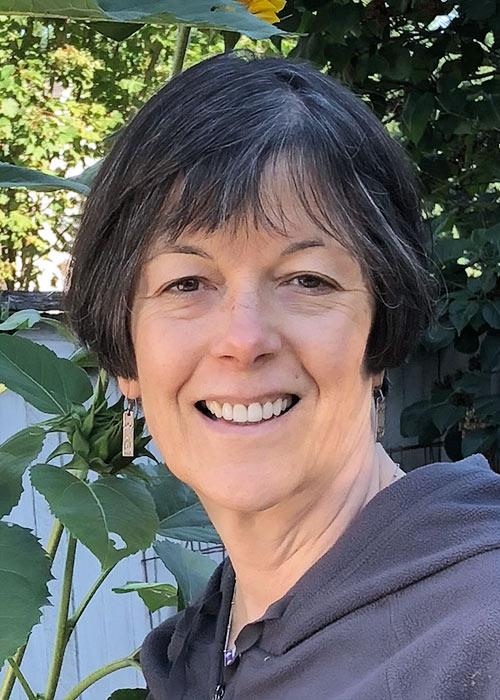
Retiring Professor of Biostatistics Barbara McKnight has always had a research interest in the causes of chronic disease, and in the statistical methods used to discover them. Early on in her career, she discovered she also had a passion for teaching and curriculum development.
Born and raised in the Seattle area, McKnight left the Pacific Northwest to earn a bachelor’s in both mathematics and English literature, and a master’s and doctorate in statistics. She returned to Seattle due, in part, to the reputation of the University of Washington School of Public Health Department of Biostatistics.
“My dissertation advisor had done his PhD here, and UW was widely regarded as the strongest Biostatistics department in the country. Once I discovered I was interested in specializing in biostatistics, a job in this department was a dream for me,” says McKnight.
She landed a post-doctoral position at UW in 1981 and, as luck would have it, an assistant professor position opened up soon after. McKnight applied for the job and was hired, and she’s been at UW ever since.
Over the course of her career, McKnight has investigated environmental risk factors for cardiovascular disease and cancer, family studies of genetic risk factors for cardiovascular disease and cancer, and statistical research to improve methods for analyzing epidemiologic and genetic epidemiologic data.
It is her work with Human Papilloma Virus (HPV) exposure and cancer that she considers her most important. Collaborating with colleagues at the Fred Hutchinson Cancer Research Center, she was involved with epidemiologic case-control studies that established a connection between certain HPV infections and ano-genital cancers and in studies examining the properties of early assays for HPV antibodies.
“The early serologic studies I helped with established the ability to measure antibodies for different subtypes of HPV in blood. These studies helped lay the groundwork for further research by others that eventually led to the development of HPV vaccines, which can prevent ano-genital cancer,” said McKnight.
For their work, McKnight and her colleagues were awarded the 2011 Team Science Award by the American Association for Cancer Research.
McKnight has also been recognized for her excellence in teaching, earning two School of Public Health Outstanding Teaching Awards during her tenure. She lists her contributions to curriculum development as one of her most satisfying achievements.
“I’m particularly proud of my contributions to curriculum development at UW,” said McKnight. “The autumn I was a post-doc, some of the epidemiology PhD students came to Donovan Thompson, the department chair at the time, to ask if Biostatistics could develop a course in survival analysis and categorical data analysis at the appropriate level. These statistical methods were gaining use in the epidemiologic literature and the students wanted to learn about them.”
The department agreed to a pilot course and McKnight offered to give a lecture on survival analysis as part of the curriculum. Instead, she was assigned to teach an entire third of the course with Norman Breslow, a faculty member known world wide as a leader in the field of modern biostatistics, sitting in to keep tabs on her. The following year, the course was formalized and McKnight was assigned to teach it.
“I learned a lot over the years about what epidemiologists who apply these methods need to understand from the questions asked of me by students, and I tried to center the way I taught the sequence around answering these questions,” said McKnight.
Looking back, McKnight also notes how technology has changed classroom teaching and the field of biostatistics as a whole.
“Nobody but the most specialized computer people had personal computers in those days, and in fact, the School of Public Health was a little special because we had our own HP3000 computer instead of using the campus mainframe,” said McKnight. The computer terminal room was roughly the size of two faculty offices and housed a plotter that would grab little pens of different colors from the side to execute a plot on paper or a transparency.
“Needless to say, a lot of computationally intensive statistical methods we use routinely today had not yet been invented then and would have been impossible to use,” she concludes.
Early in her career, when preparing for class, McKnight would write notes on a yellow pad of paper and walk into the classroom with the pad and a piece of chalk. In class she would say something, turn around and write it on the board, and then turn back to the class and say it again. There were no recordings, and students took notes.
McKnight recalls, “We covered less material per quarter in those days, but I think that what we did cover, students learned more deeply."
After retiring from UW, McKnight will continue to work part time on research at the UW’s Cardiovascular Health Research Unit, with which she’s been affiliated for over a decade.
“I’m looking forward to more time for general reading, exercise, music (I’ve been learning to play the baroque recorder), various art projects, and tackling some neglected house and garden tasks. Also, I hope soon it will be possible to travel again and play music together with friends. But I will miss meeting with students who are curious and eager to learn. It has been my great pleasure over the years to have had so many satisfying interactions with students,” she concludes.
Deb Nelson, Biostatistics communications and event manager